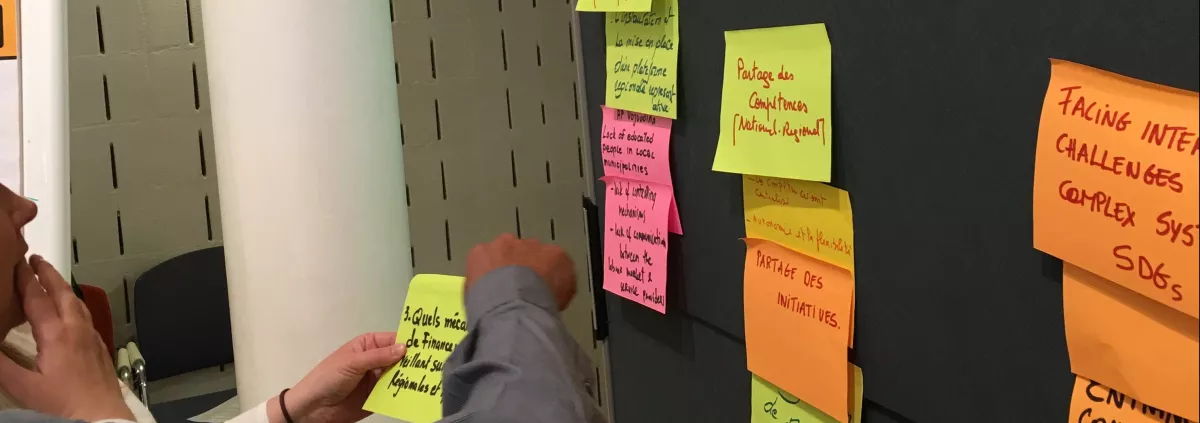
You are kindly invited to use the table of content on your right to navigate.
The modernisation of VET in ETF partner countries most often requires far-reaching comprehensive change to the system of VET governance at the national, regional, local and sectoral level. The development of multilevel governance is the key enabler of alignment between VET services and the needs of the economy and society. Ultimately, this requires the introduction of new ways of thinking about provision, based on the sector-wide approach embracing skills, human capital development, lifelong learning. It also necessitates the development of new mechanisms for vertical and horizontal coordination, the piloting of new structures for stakeholder dialogue on how to link the skills needs of the economy with VET provision, well-targeted labour market measures, and equitable access for all citizens to timely, relevant VET services, within the logic of life-long learning. VET actors at all levels may require new capabilities to use unfamiliar processes and practices involving dialogue, anticipation and innovation, based on collaboration with social partners and with civil society organisations on place-based policies developed using the approach of territorial governance. In addition, it is necessary to ensure that changes in the system are adapted to local needs using new processes that allow flexibility within high quality standards; for example, with regard to decision-making on course content, the introduction of new approaches to training such as work-based learning, and novel methods for VET financing based on mechanisms such as training levies and public-private partnerships.
The design and management of reform on this scale requires a systematic approach based on best practice in CHANGE MANGEMENT that starts with the development of an UNDERSTANDING of why such change is needed, underwritten by the government at the highest level and shared by all stakeholders. It is further necessary to have a shared VISION of what the reformed skills system will become as a result of the reform work undertaken. This vision must be made operational, based on a ROADMAP and ACTION PLAN, with a timeline, well-defined measures, clearly assigned responsibilities and a system of indicators that enables the monitoring of progress. There are many ways to arrive at such a shared vision and roadmap. The recommended approach is based on the use of FORESIGHT, a governance tool that emphasises understanding the dynamics of change, recognising the need for reform and the direct involvement of stakeholders in a transparent process of vision building and roadmap design.
The use of Foresight is generally accompanied by a formal Review of Institutional Arrangements or RIA. This is important because it appraises the feasibility of the actors implementing the listed reform measures, based on their actual capabilities and their ability to carry out the assigned reforms as described in the roadmap.
The ETF has accompanied many of its partner countries through this process of creating a platform for implementing a VET reform agenda, by developing a vision and elaborating a detailed roadmap of measures by which this vision can be realised. Based on this experience, it has elaborated a guide to Foresight as part of its larger Governance Toolbox. An example of the implementation of the methodology is provided by the case of Bosnia-Herzegovina, but further illustrations are available on the ETF website. Each case will be different depending on the circumstances, resources and the time available. The scope for variation is illustrated by the cases of Albania and Ukraine. Both of these represent a significant departure from the approach used in Bosnia-Herzegovina. In each of these two cases an exceptional context was created by the urgency of important legislative reforms, and in each case the approach had to be adapted accordingly.
In summary, the Foresight stage in building a vision for the skills of the future is the first of three steps that make up the general process of VET reform, as advocated by the ETF in its approach to the governance of VET systems, and the means of implementing comprehensive reform. In doing so it follows the logic of CHANGE MANAGEMENT. The guide to vision building, provided as part of the ETF VET Governance Toolbox outlines a model from which the agents of change in any VET reform initiative can draw inspiration.

DIGITAL TRANSFORMATION IN EDUCATION AND SKILLS DEVELOPMENT – WHAT NEEDS TO BE DONE (INSPIRED BY A BOOK BY BLAKE MORGAN “CUSTOMER OF THE FUTURE”)
1. Learner focus. Before a digital transformation can truly begin, the education system must switch its mindset from being education-focused to being learner-focused. The driving force behind technology decisions should be learners, and the goal should be to make their lives easier instead of making things easier for the education system. A learner focus approach is the basis for all other digital transformation decisions.
2. Organizational structure. The education system needs to break down internal silos to create a cohesive organization that embraces change. That means getting leaders on board with the new digital vision.
3. Change management. Change is hard, no matter how much it will benefit the educations and training system. One of the most common reasons digital transformations fail is because employees do not support them. The most effective change management efforts are aligned with the modern dynamic learning environment.
4. Transformational leadership. A successful digital transformation starts from the top with leaders who drive educators towards the vision. Every policy maker and leader must play a role in championing digital change and uniting the digital transformation with the education and skills long-term goals.
5. Technology decisions. Digital transformation impacts the entire education and skills development system, not just one department or one provider. All stakeholders must be involved in the digital transformation process.
6. Integration. All data systems need to work together and be integrated into the education and skills development processes. A streamlined data strategy is required for a successful digital transformation.
7. Internal customer experience. When focusing on digital solutions for learners, the system also needs to consider their internal customers—policy makers and the providers. Getting stakeholder feedback and providing client-grade technology solutions empowers educators to provide an amazing learning experience.
8. Logistics and supply chain. Digital transformation can be powerful in improving the speed and reliability of the supply chain, from how fast learning actions are developed to the speed and efficiency of needs and provision. To fully leverage a transformation, the education system both public and private provision needs to look at how the education and skills development supply chain can be digitized and improved.
9. Data security, privacy and ethics. Adopting new digital solutions opens the doors to new questions about data security. Most end users think their personal data is at risk, which means that adopting sector-wide standards for privacy and security should be top of mind.
10. Evolution of education products, services and processes. Digital transformation requires a change in thinking about how education and skills delivers’ its outcomes and results, and even the programmes and education services themselves. Successful outcomes and results push past what’s always been done to find the most efficient and innovative solutions for learning and development.
11. Digitization. Digital transformation touches all areas of the education and skills system organization and blurs the line between digital and physical schools/colleges/universities. That means moving past segmented silos is all aspects of education and skills development.
12. Personalize. Digital transformation provides unparalleled opportunities to offer personalized learning experiences and service to individuals. Leverage digital solutions to understand learners and provide recommendations and learning solutions that are unique to them.
Sorry I see this only now, @Oliver. Excellent points
Please log in or sign up to comment.